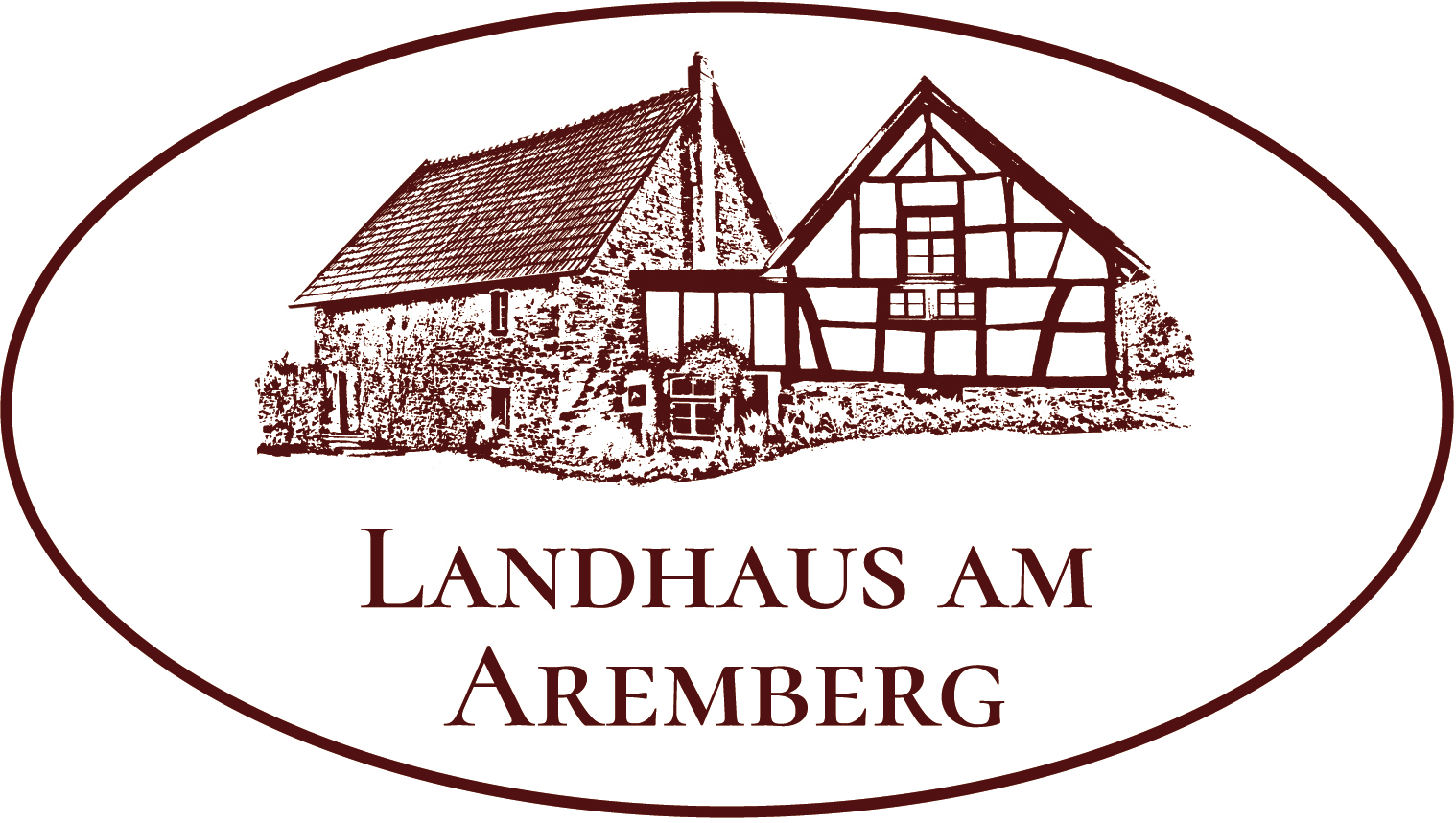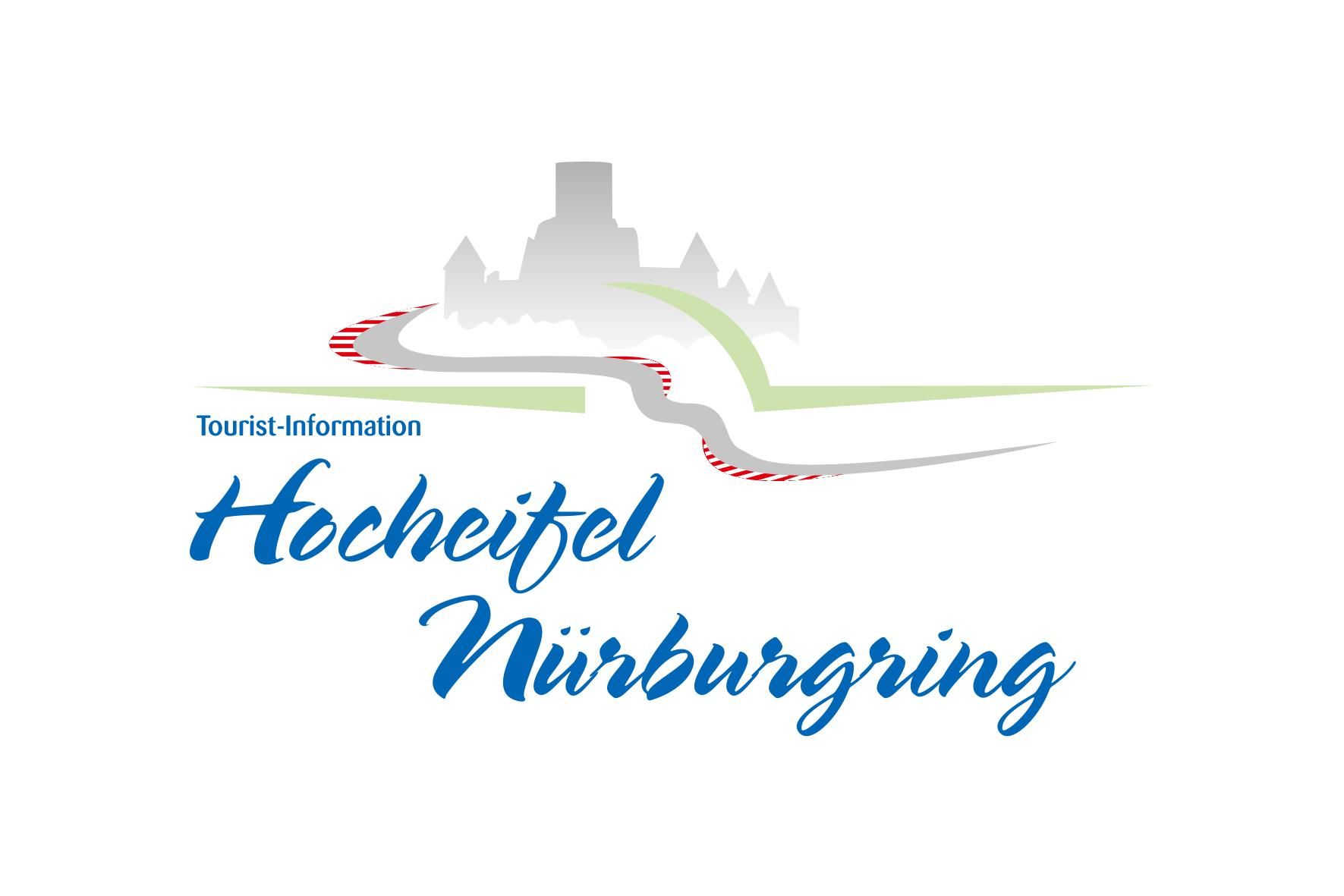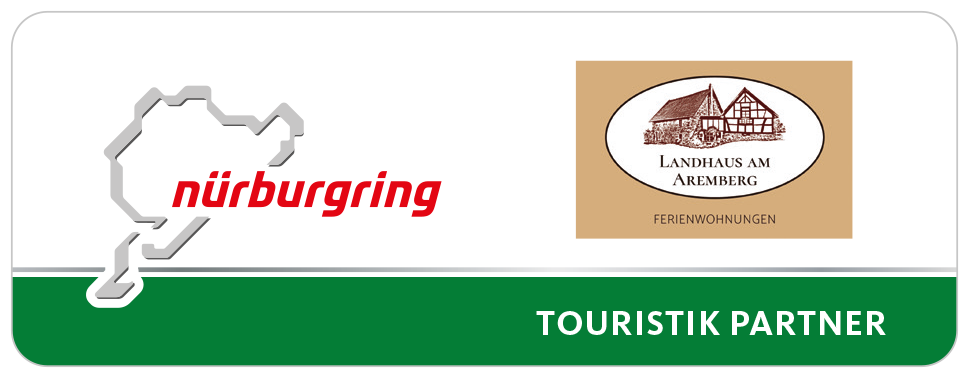Adventure in the Eifel
The Eifel offers a perfect mix of nature, history and adventure. Hikes through picturesque landscapes, historic castles and the legendary Nürburgring for motorsport fans - everyone gets their money's worth here. Ideal for relaxation and exciting experiences at the same time.
Hiking in the Eifel
Ahrsteig and Eifel loops
Hiking in the Ahr Valley and the Eifel offers exciting nature experiences. Numerous well-signposted hiking trails such as the famous Eifelsteig and Traumpfade lead through picturesque landscapes, past vineyards, idyllic valleys, forests and volcanic lakes. Perfect for nature lovers and those seeking peace and quiet!
Hiking in the Eifel
Ahrsteig and Eifel loops
Hiking in the Ahr Valley and the Eifel offers exciting nature experiences. Numerous well-signposted hiking trails such as the famous Eifelsteig and Traumpfade lead through picturesque landscapes, past vineyards, idyllic valleys, forests and volcanic lakes. Perfect for nature lovers and those seeking peace and quiet!
Cycling in the Eifel
vacation by bike
The Eifel is an Eldorado for cyclists of all kinds. Whether you're taking it easy on one of the many cycle paths or going cross-country on a mountain bike through forest and mud. Racing cyclists can train their fitness on one of the many climbs in the area. We also have e-bikes available for you... Feel free to contact us!
Cycling in the Eifel
vacation with the bike
The Eifel is an Eldorado for cyclists of all kinds. Whether you're taking it easy on one of the many cycle paths or going cross-country on a mountain bike through forest and mud. Racing cyclists can train their fitness on one of the many climbs in the area. We also have e-bikes available for you... Feel free to contact us!
Ahr Valley & Wine
Red Wine Hiking Trail & More
The Ahr Valley is a paradise for wine lovers: along the red wine hiking trail, charming wine taverns and wineries invite you to take a break and enjoy regional specialties and Ahr wines such as Pinot Noir. The hiking trail between Altenahr and Bad Neuenahr-Ahrweiler offers breathtaking views of the Ahr and can be easily explored in small stages. Buses and trains commute between the wine towns every hour and take you back to the Landhaus am Aremberg in a relaxed manner.
Ahr Valley & Wine
Red Wine Hiking Trail & More
The Ahr Valley is a paradise for wine lovers: along the red wine hiking trail, charming wine taverns and wineries invite you to take a break and enjoy regional specialties and Ahr wines such as Pinot Noir. The hiking trail between Altenahr and Bad Neuenahr-Ahrweiler offers breathtaking views of the Ahr and can be easily explored in small stages. Buses and trains commute between the wine towns every hour and take you back to the Landhaus am Aremberg in a relaxed manner.
Nürburgring
most beautiful race track in the world
The Nürburgring and its legendary Nordschleife are both cult and mythical! The ring also casts a spell over people without petrol in their veins. F1 driver Sir Jackie Stewart simply named the 20.83-kilometer-long Nordschleife track the "Green Hell." During the tourist rides, you can "enjoy" the constant ups and downs in your own car. If you like it even faster, just hop in the Ring Taxi with a professional driver. On nice days, a large number of spectators gather along the track and cheer on the big and small racing drivers - the smell of rubber is guaranteed!
Nürburgring
most beautiful race track in the world
The Nürburgring and its legendary Nordschleife are both cult and mythical! The ring also captivates people without petrol in their veins. F1 driver Sir Jackie Stewart christened the 20.83-kilometer-long Nordschleife track the "Green Hell." During the tourist rides, you can "enjoy" the constant ups and downs in your own car. If you like it even faster, just hop in the Ring Taxi with a professional driver. On nice days, a large number of spectators gather along the track and cheer on the big and small racing drivers - the smell of rubber is guaranteed!
ring°werk
Motorsport Experience Museum at the Nürburgring for the whole family
In the ring°werk, the motorsport experience museum, you get very close to the myth of the Nürburgring.
Here you can feel like a racing driver yourself in simulators and other attractions. You can also admire historic vehicles from motorsport history.
The
ring°kart trackpromises driving fun in electric karts and inring°kinoCurrent movies provide the best entertainment.
ring°werk
Motorsport Experience Museum at the Nürburgring for the whole family
In the ring°werk, the motorsport experience museum, you get very close to the myth of the Nürburgring.
Here you can feel like a racing driver yourself in simulators and other attractions. You can also admire historic vehicles from motorsport history.
The
ring°kart trackpromises driving fun in electric karts and inring°kinoCurrent movies provide the best entertainment.
Freilinger See
natural bathing lake with the highest water quality
Lake Freilingen is a paradise for those seeking relaxation. Crystal-clear water, extensive green areas and a wide range of leisure activities make it the perfect destination.
Whether swimming, hiking, water sports or a leisurely picnic - everyone will find their favorite spot here. Families appreciate the shallow banks and the playground, while nature lovers enjoy the idyllic setting.
Freilinger See
natural bathing lake with the highest water quality
Lake Freilingen is a paradise for those seeking relaxation. Crystal-clear water, extensive green areas and a wide range of leisure activities make it the perfect destination.
Whether swimming, hiking, water sports or a leisurely picnic - everyone will find their favorite spot here. Families appreciate the shallow banks and the playground, while nature lovers enjoy the idyllic setting.
Kommern Open Air Museum
One of the largest in Europe
In the spacious area you can discover over 75 historic buildings and farms from various regions of the Rhineland, which have been lovingly restored and furnished true to their original state. With lively craft demonstrations, seasonal events and an insight into everyday life in past centuries, the museum offers a fascinating experience for the whole family. Nature trails and picnic opportunities make the trip perfect - a place where history becomes tangible!
Kommern Open Air Museum
One of the largest in Europe
In the spacious area you can discover over 75 historic buildings and farms from various regions of the Rhineland, which have been lovingly restored and furnished true to their original state. With lively craft demonstrations, seasonal events and an insight into everyday life in past centuries, the museum offers a fascinating experience for the whole family. Nature trails and picnic opportunities make the trip perfect - a place where history becomes tangible!
Eifel National Park
With Ordensburg Vogelsang IP
A true paradise for nature lovers, where the "primeval forest of tomorrow" unfolds and rare animals such as the eagle owl and the wild cat find their habitat. In the midst of this wild beauty lies the former Nazi Ordensburg Vogelsang, which today serves as a documentation center. The Rursee invites you to take relaxing boat trips, where you can experience the impressive nature from a different perspective. Ranger tours lead through untouched forests and provide deep insights into the fragile ecosystem of the park.
Eifel National Park
With Ordensburg Vogelsang IP
A true paradise for nature lovers, where the "primeval forest of tomorrow" unfolds and rare animals such as the eagle owl and the wild cat find their habitat. In the midst of this wild beauty lies the former Nazi Ordensburg Vogelsang, which today serves as a documentation center. The Rursee invites you to take relaxing boat trips, where you can experience the impressive nature from a different perspective. Ranger tours lead through untouched forests and provide deep insights into the fragile ecosystem of the park.
Wohlleben's Forest Academy
training courses, seminars, herbal walks
In the neighboring town of Wershofen, bestselling author Peter Wohlleben and his team from the Forest Academy offer you forest experiences that will inspire you. Explore the fascinating secrets of the forest at mushroom seminars, herb walks, guided tours or multi-day seminars - authentic, educational and with a lot of heart for nature.
Wohlleben's Forest Academy
training courses, seminars, herbal walks
In the neighboring town of Wershofen, bestselling author Peter Wohlleben and his team from the Forest Academy offer you forest experiences that will inspire you. Explore the fascinating secrets of the forest at mushroom seminars, herb walks, guided tours or multi-day seminars - authentic, educational and with a lot of heart for nature.
Castles in the Eifel
Highest castle density in Europe
Discover the impressive variety of castles in the Eifel! From the majestic Eltz Castle, one of the most beautiful castles in Germany, to the impressive Nürburg Castle Ruins, which towers high above the legendary Nordschleife. Visit the Lock and museum Bürresheim, the romantic Satzvey Castle, known for its spectacular knight games, or the venerable castles of ManderscheidEach of these castles tells its own exciting story and invites you to unforgettable experiences. The Eifel - a paradise for castle lovers and explorers!
Castles in the Eifel
Highest castle density in Europe
Discover the impressive variety of castles in the Eifel! From the majestic Eltz Castle, one of the most beautiful castles in Germany, to the impressive Nürburg Castle Ruins, which towers high above the legendary Nordschleife. Visit the Lock and museum Bürresheim, the romantic Satzvey Castle, known for its spectacular knight games, or the venerable castles of ManderscheidEach of these castles tells its own exciting story and invites you to unforgettable experiences. The Eifel - a paradise for castle lovers and explorers!
maars and volcanoes
UNESCO Geopark Vulkaneifel
The Volcanic Eifel is a fascinating travel destination with unique volcanic lakes, the maars, which were created by explosive eruptions. The region is also known for its inactive volcanoes and mineral springs. The Lava Dome in Mendig offers an exciting exhibition on the region's volcanism. The crater of the no longer active Arensberg volcano near Walsdorf-Zilsdorf near Hillesheim can be entered through a tunnel and is one of the most important volcanic cones in the region.
maars and volcanoes
UNESCO Geopark Vulkaneifel
The Volcanic Eifel is a fascinating travel destination with unique volcanic lakes, the maars, which were created by explosive eruptions. The region is also known for its inactive volcanoes and mineral springs. The Lava Dome in Mendig offers an exciting exhibition on the region's volcanism. The crater of the no longer active Arensberg volcano near Walsdorf-Zilsdorf near Hillesheim can be entered through a tunnel and is one of the most important volcanic cones in the region.
The most beautiful places
Historic old towns and half-timbered houses in the Eifel
A trip through the Eifel includes visiting historic towns such as the old cloth-making town of Monschau, the copper town of Stolberg, the castle village of Kronenburg or the half-timbered idyll of Monreal. For shopping and strolling, head to Bad Münstereifel. The historic town centre is completely protected and is surrounded by a medieval town wall that is very well preserved.
The most beautiful places
Historic old towns and half-timbered houses in the Eifel
The Eifel is rich in charming historical places with beautiful half-timbered houses, such as the old cloth-making town of Monschau, the copper town of Stolberg, the castle village of Kronenburg or the half-timbered idyll of Monreal. For shopping and strolling, head to Bad Münstereifel. The historic town centre is completely protected and is surrounded by a medieval town wall that is very well preserved.
traces of the Romans
Ancient Sights in the Eifel
Immerse yourself in the world of the Romans and discover impressive evidence of a time long past. Visit Trier, the oldest city in Germany, with its famous Roman buildings such as the Porta Nigra, the Imperial Baths and the amphitheater or the Roman villa in Ahrweiler. But you will also pass Roman achievements at countless places on the Eifelsteig, such as the aqueduct, the Roman mine near Kordel or a Roman settlement near Nettersheim.
traces of the Romans
Ancient Sights in the Eifel
Immerse yourself in the world of the Romans and discover impressive evidence of a time long past. Visit Trier, the oldest city in Germany, with its famous Roman buildings such as the Porta Nigra, the Imperial Baths and the amphitheater or the Roman villa in Ahrweiler. But you will also pass Roman achievements at countless places on the Eifelsteig, such as the aqueduct, the Roman mine near Kordel or a Roman settlement near Nettersheim.
Wildparks
Wolves and lynxes up close
The Eifel offers numerous wildlife parks and zoos, which are ideal destinations for families, nature lovers and animal lovers. The whole family can enjoy a lovely day in the Eifelpark Gondorf, a successful mixture of amusement park and game reserve. Also recommended are the game parks of Daun, Kasselburg or Hellenthal. In addition to wild animals such as deer, mouflons and wild boars, some parks are also home to lynx, wolves and bears. A visit to a bird of prey show is also impressive.
Wildparks
Wolves and lynxes up close
The Eifel offers numerous wildlife parks and zoos, which are ideal destinations for families, nature lovers and animal lovers. The whole family can enjoy a lovely day in theEifelpark Gondorf, a successful mixture of amusement park and wildlife enclosure. Also recommended are the wildlife parks of
Daun,
Kasselburg or
HellenthalIn addition to wild animals such as deer, mouflons and wild boars, some parks are also home to lynx, wolves and bears. A visit to a bird of prey show is also impressive.








